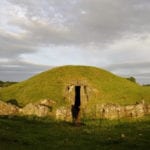 Technology
Technology  Technology
Technology  Humans
Humans 10 Everyday Human Behaviors That Are Actually Survival Instincts
 Animals
Animals 10 Animals That Humiliated and Harmed Historical Leaders
 History
History 10 Most Influential Protests in Modern History
 Creepy
Creepy 10 More Representations of Death from Myth, Legend, and Folktale
 Technology
Technology 10 Scientific Breakthroughs of 2025 That’ll Change Everything
 Our World
Our World 10 Ways Icelandic Culture Makes Other Countries Look Boring
 Misconceptions
Misconceptions 10 Common Misconceptions About the Victorian Era
 Mysteries
Mysteries 10 Strange Unexplained Mysteries of 2025
 Miscellaneous
Miscellaneous 10 of History’s Most Bell-Ringing Finishing Moves
 Technology
Technology Top 10 Everyday Tech Buzzwords That Hide a Darker Past
 Humans
Humans 10 Everyday Human Behaviors That Are Actually Survival Instincts
 Animals
Animals 10 Animals That Humiliated and Harmed Historical Leaders
Who's Behind Listverse?

Jamie Frater
Head Editor
Jamie founded Listverse due to an insatiable desire to share fascinating, obscure, and bizarre facts. He has been a guest speaker on numerous national radio and television stations and is a five time published author.
More About Us History
History 10 Most Influential Protests in Modern History
 Creepy
Creepy 10 More Representations of Death from Myth, Legend, and Folktale
 Technology
Technology 10 Scientific Breakthroughs of 2025 That’ll Change Everything
 Our World
Our World 10 Ways Icelandic Culture Makes Other Countries Look Boring
 Misconceptions
Misconceptions 10 Common Misconceptions About the Victorian Era
 Mysteries
Mysteries 10 Strange Unexplained Mysteries of 2025
 Miscellaneous
Miscellaneous 10 of History’s Most Bell-Ringing Finishing Moves
10 Sacred Mountains With Weird And Fascinating Stories
Mountains have always been revered as places of power. Throughout history, mystics and hermits retreated to their heights to obtain enlightenment. The ancients even believed that some mountains were the dwellings of their gods. While some of these mountains have lost their titles as divine beacons, others are still revered as places where it’s possible to connect to the gods.
10 Mount Shasta
California, USA
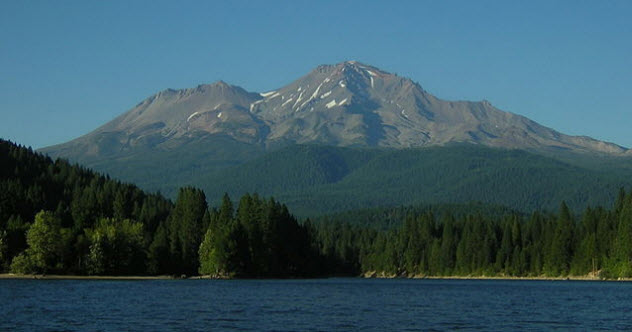
Throughout history, Mount Shasta has been the focus of several religious legends. The Klamath tribe believed that Mount Shasta and nearby volcano Mount Mazama were avatars of the gods who spewed fire at each other in epic battles. Llao, the god of the Below-World, wanted the beautiful daughter of the Klamath chief for his wife. But the girl rejected Llao because of his horrible underworld appearance. Angered, Llao promised to seek his vengeance on her people.
The Klamath petitioned Skell, the god of the Above-World, to fight on their behalf. With Skell on Mount Shasta and Llao on Mount Mazama, their duel began. The battle caused earthquakes and explosions as they flung burning rocks back and forth from peak to peak. According to legend, the fight grew so intense that two medicine men sacrificed themselves by jumping into a pit in the Below-World. Urged on by their sacrifice, Skell redoubled his efforts and finally defeated Llao.
Much later in the 1880s, spiritualist Frederick Spencer Oliver wrote a book about a secret city that existed in tunnels beneath Mount Shasta. He mentioned the mystical continent of Lemuria, an idea which theosophists later latched onto and expanded for their own purposes. The Lemuria–Mount Shasta legend became increasingly popular, spawning the “I AM” movement, which at its height had one million followers.
The founder, Guy W. Ballard, claimed that he took a short journey to Mount Shasta where he encountered the divine messenger, the Count of Saint Germain. The count offered Ballard a cup filled with “pure electronic essence,” which granted him knowledge. Armed with his claims, Ballard founded a new religion in Los Angeles that later swept across America. The movement began to fizzle with Ballard’s death and collapsed when members of its inner circle were indicted for fraud.
9 Mount Koya
Wakayama, Japan
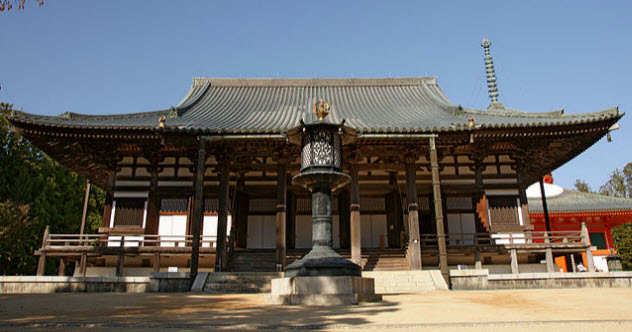
Mount Koya is the headquarters of the Shingon Buddhism sect, which was established by the famed monk Kukai. It’s now a popular tourist attraction in Japan. Mount Koya and the surrounding area boasts 117 temples that visitors can explore, many of which offer accommodations for guests.
Kukai was one of the greatest figures of Japanese Buddhism. His efforts succeeded in bridging the gap between the Imperial Court, monasticism, and the common people. After he died, the remaining leaders of his sect petitioned the Imperial Court to grant Kukai the posthumous title of “Kobo Daishi.”
Legend says that when the senior priests entered his mausoleum to place the declaration before his dead body, they found Kukai alive and in deep meditation. He was believed to have transcended death through eternal meditation. He is supposedly awaiting the coming of Maitreya, the future Buddha who will bring salvation to humanity.
After tales of Kukai’s immortality spread, so did the influence of the Shingon sect, which had slumped after his “apparent” death. Shingon became associated with future salvation, and thousands of stories of the miraculous deeds of Kobo Daishi began spreading across Japan.
8 Mount Kailash
Ngari, Tibet
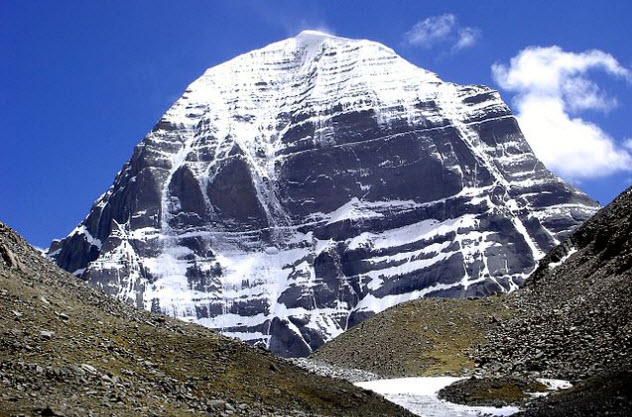
Mount Kailash is sacred to a number of religions, although it has never been home to any religious conflict. The mountain is deemed so sacred by everyone that even setting foot on it would be sacrilege.
In Hinduism, Kailash is the abode of the god Shiva and the goddess Parvati. Legend has it that Parvati was so beautiful that the sight of her made Shiva renounce his asceticism and marry her. On their wedding night, Parvati wanted to take Shiva to “heaven on Earth,” so she took him to the crystal mountain, Mount Kailash. They are believed to be in an eternal embrace on the mountain.
According to Tibetan Buddhism, the high lama Milarepa won a competition with Naro Bonchung, the leader of the native Tibetan religion Bon, for spiritual power on Mount Kailash. Buddhist belief states that circling the mountain one time will atone for all of one’s sins committed in this lifetime. Circling 10 times will prevent eternal damnation. Circling 100 times makes a person one with Buddha. Followers of the Bon religion also circle the mountain as a pilgrimage but do so in the opposite direction.
Mount Kailash has never been climbed. However, in 2001, Western news sources reported that China had given Spanish mountaineers permission to climb the mountain. Supposedly, the Chinese government believed that this would crush the Tibetan spirit by desecrating the site. An immediate outcry ensued. The Dalai Lama warned the Spanish team against treating the mountain as sport while it was the focus of so many religions.
Famous German climber Reinhold Messner, who once declined an invitation to climb Kailash in the 1980s, also condemned the Spanish team. He believes that conquering the mountain would be the same as conquering the souls of millions of people. Eventually, China released a statement saying that it had never given the Spanish team permission to climb and that no climbing activities would ever be permitted on the sacred site.
7 Mount Fuji
Yamanashi and Shizuoka, Japan
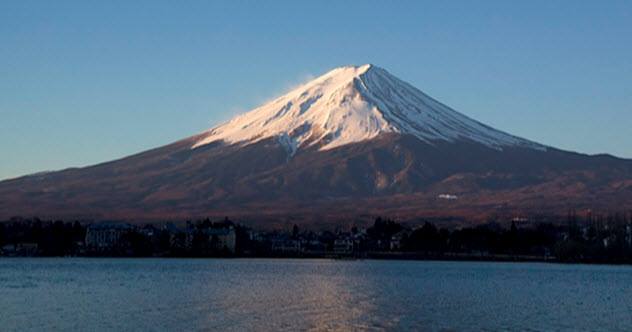
Climbed by thousands every year, Mount Fuji sits on the borders of Yamanashi and Shizuoka Prefectures. Always recognized as a symbol of Japan, the mountain has been the basis for many stories. The most famous is the 10th-century novel Taketori Monogatari. It tells the story of a mysterious baby found in the forest by a bamboo cutter. Having no children of their own, the bamboo cutter and his wife take in the strange baby girl and name her “Princess Kaguya.” The girl grows up in just three months, and her beauty attracts many suitors, including the emperor.
However, Kaguya does not choose any of them and eventually flies off to her home, the Moon. Although she forsakes Earth, she does leave the emperor a few parting gifts, including the elixir of life. But the emperor is heartbroken at losing Kaguya and doesn’t wish to live forever without her. He orders that all the gifts, including the elixir, be burned on the mountain closest to the Moon. According to the story, that mountain is then named Mount Fuji, or the “Mountain of Immortality,” because it is the home of the elixir of life.
Mount Fuji recently became a UNESCO World Heritage site, mainly because of the mountain’s spiritual history. Aside from the Princess Kaguya legend, there are countless others stories about the deities of Mount Fuji. These tales have inspired many ascetics to visit the mountain in pursuit of spiritual power. The most famous one was Hasegawa Kakugyo, whose religious activities led to the formation of the Fuji-ko cult, whose members worshiped the mountain as a god.
Following in Kakugyo’s footsteps was the ascetic Miroku, who was believed to have died in the form of a mummy while offering prayers to the mountain for the happiness of all people. Although the cult often helped the local community, it eventually became so fanatical that it was banned by the Tokugawa Shogunate.
6 Uluru/Ayers Rock
Northern Territory, Australia
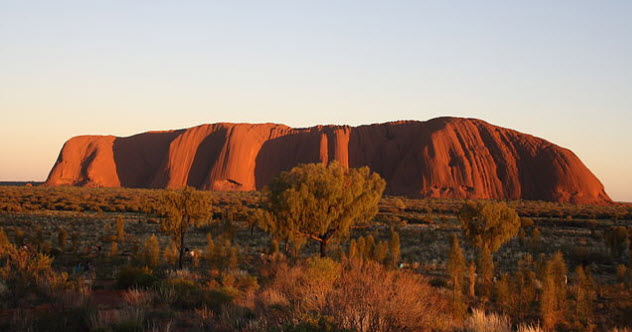
Uluru, also known as “Ayers Rock,” is a rock formation in Australia that has been a hotbed of controversy for many years. To the Aboriginal people, Uluru is the physical evidence of their dreamtime creation story. They have held it sacred for thousands of years.
Supposedly, 10 ancestors of the Aboriginal people created Uluru at the beginning of time. According to the legend, the world was a featureless place until the ancestors traveled across the wasteland creating places like Uluru. There are numerous ancient petroglyphs throughout the area. By touching these petroglyphs, the local tribes believe they can communicate with dreamtime and receive blessings from their ancestors.
Uluru also became known as “Ayers Rock” after it was named for Sir Henry Ayers, the governor of a colony in South Australia, in 1873. Uluru and the surrounding land eventually became a national park, which nonnative Australians regard as a national icon. Although the Aboriginal people don’t want visitors to climb the mountain because that would be like walking over a church pew, the mountain remains a popular place for outdoor activities.
Since 1991, however, the number of tourists who’ve chosen to climb the mountain has dropped from 70 percent to 50 percent. Regardless, many climbing tours exist, showcasing the heritage of the Aboriginal people through the site’s petroglyphs and other features, which is exactly what the Aboriginal people didn’t want to happen.
5 Mount Lykaion
Arcadia, Greece
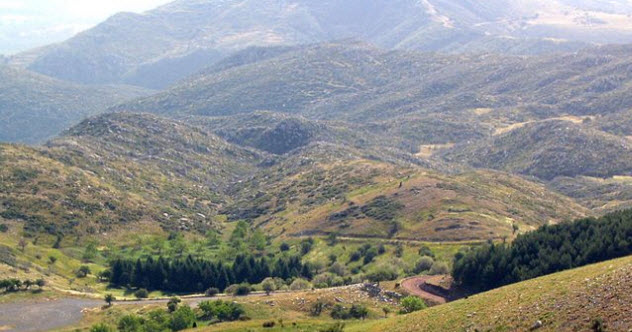
Mount Lykaion is the location of one of the earliest werewolf legends. It started with King Lykaon, the mythical founder of both the ancient cult of Zeus Lykaios and the town of Lykosura below the mountain. Lykosura was supposed to be the location of the Lykaian Games, the oldest of their kind.
Lykaon had 50 sons, all of whom later died. As told in ancient legend, Lykaon’s only daughter was on a hunting expedition when she was raped and impregnated by Zeus. Lykaon was so angered by the defilement of his daughter that he killed her son and served him to Zeus while the god was visiting for dinner. In turn, Zeus became so furious that he killed all of the king’s sons and transformed Lykaon into a wolf.
The story gave birth to a werewolf superstition. The cult of Zeus Lykaios participated in an annual sacrifice where the meat was supposed to contain human flesh. Every year, one man who ate the tainted meat was turned into a wolf. He would remain in that form for nine years, after which he would revert to a man as long as he didn’t taste human flesh. If he did consume the flesh of man again, he would continue in his wolf form for the rest of his life.
4 Mount Sinai
Sinai, Egypt
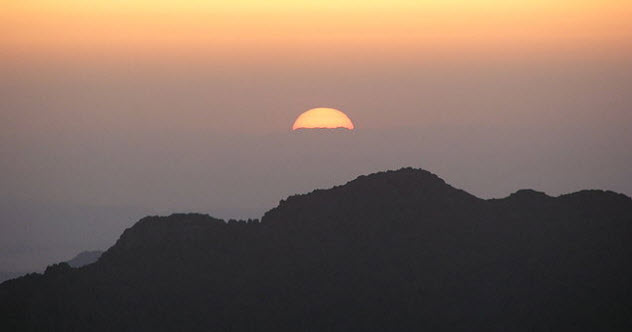
Mount Sinai is well-known among Jews, Christians, and Muslims as the place where God revealed the Ten Commandments to Moses. But aside from its importance to these three faiths, it is also the place of perhaps the greatest olive branch ever offered between Islam and Christianity.
Saint Catherine’s Monastery lies at the foot of the mountain and lays claim to being the oldest working Christian monastery in the world. It is so old that Muhammad is believed to have visited there and had many discussions with the church fathers. In AD 626, the second year of the Hegira, it is believed that a delegation from Sinai requested a letter of protection from Muhammad. He granted their request by writing the Achtiname (Testament) of Muhammad, a declaration that granted his special protection to the monks as well as the Christians in the area.
It was so generous that it even exempted them from taxes. The original document and its copies depict a hand that serves as the seal of the Islamic prophet. In 1517, Ottoman Sultan Selim I conquered Egypt. Later that year, the Sinai monks presented him with the original Achtiname. The sultan confirmed the document and took it to Istanbul for safekeeping while leaving the monks with certified copies. He also left their land in peace.
3 Mount Teide
Tenerife, Canary Islands
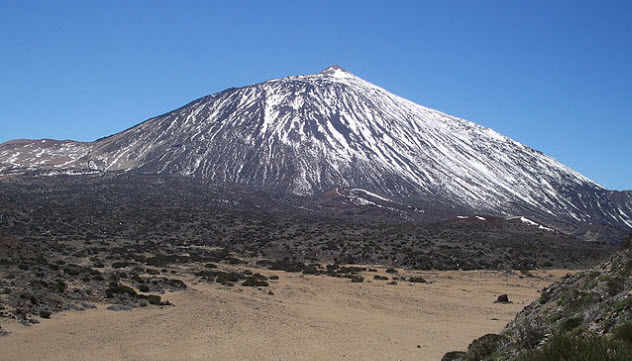
Mount Teide is the focus of a legend dating to the early days of the Guanches, the original inhabitants of the island of Tenerife, who were believed to have immigrated there in 1000 BC. Teide was also believed to be the entrance to the underworld.
The legend states that Teide was the abode of Guayota, the god of the dead who was identified with hell. Having witnessed at least six eruptions, the Guanches came to fear the volcano as an evil force of destruction. By imprisoning the Sun god within the volcano, Guayota plunged the world into eternal night. The Guanches appealed to Archaman, the supreme god, to battle Guayota and free the Sun god. Archaman defeated the evil god and sealed him in the volcano. During eruptions, Guayota would try to break free, so the Guanches lit bonfires to keep him inside.
Tenerife was also once home to the legend of Atlantis. The well-known legend says that the mythical civilization sank overnight due to some cataclysm in the distant past. Only the highest peaks remained above sea level, forming the islands of Macaronesia, which included the Canary Islands. A distinguished naturalist visited the islands and lent some credibility to the legend with his studies. But when modern science revealed that the islands lay atop the oceanic crust, the Canary Islands lost their mythical status.
2 Mount Sanjo
Nara, Japan
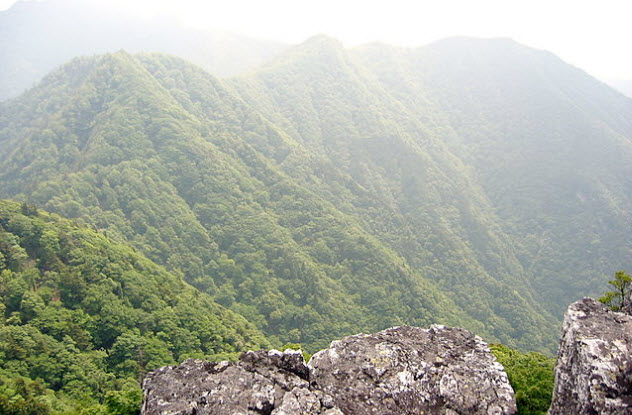
Mount Sanjo, also known as “Mount Omine,” is the chief peak of the Omine mountain range south of Nara. The mountain, once known as “Golden Peak,” was also believed to be full of gold. According to Japanese legend, Emperor Shomu built Todaiji Temple and had a huge Buddha statue enshrined in its vast hall.
However, Japan did not have enough gold to gild the enormous statue. So the emperor called upon the greatest monks of the age to ask for advice. They told him that Mount Sanjo supposedly had gold, which was being watched by a god. The emperor sent Roben, the monk overseeing the project, to Mount Sanjo to pray for the god to hand over the gold.
The god informed Roben that Mount Sanjo was where the future Buddha Miroku stored the gold that he would give out upon his coming into the world. Although the protector spirit couldn’t give away Miroku’s gold, he offered to send gold from another region if Roben built a shrine in the Omi province to the god Nyoirin Kannon. Roben had the shrine built, and the god kept his word. The emperor soon had enough gold to complete the Buddha.
More recently, Mount Sanjo, the site of a temple for the followers of Shugendo, has been the source of controversy. The religion forbids women from climbing the mountain or entering the Buddhist temple at the top. The basis for the ban is that women would distract the monks there, who once endured a strict test of self-denial while on the mountain, including abstinence. However, in the past, these monks enjoyed going to numerous brothels at the bottom of the mountain when their tests were completed.
Several women had protested the ban by entering the sacred site, although trespassing charges were never filed. The temple only sent a letter asking the women to respect local traditions. However, the religious gatekeepers can’t be accused of widespread discrimination. After all, their ban does not extend to male foreigners, men of other religions, homosexuals, men dressed as women, or dogs (including female dogs).
1 Vulture Peak
Rajagriha, India
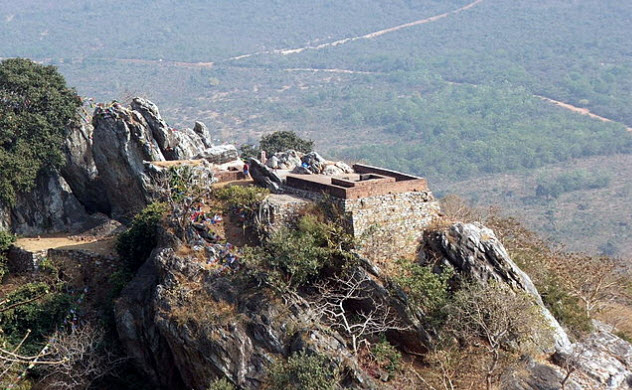
Although it was popularized in Japan, Zen Buddhism originated in China. Among its teachings, one of the main tenets is that words cannot express truth. Scriptures and teachings are not held in high regard; instead, there is a belief in instant transmission of knowledge from teacher to pupil. Buddha’s Flower Sermon is perhaps the best example.
Griddhraj Parvat, also known as “Vulture Peak,” is a small mountain in India where it is believed that Buddha spent much of his time giving sermons. Supposedly, he delivered many of his most important sermons there, including the Lotus Sutra, which is held by many sects to be his most complete teaching.
For Zen Buddhism, however, the most important Vulture Peak sermon was the Flower Sermon, on which the religion bases its founding principles. Buddha supposedly held up a single flower in absolute silence. No one understood the sermon’s meaning except a monk named Kashyapa, who acknowledged its message with a smile. When Buddha saw the smile, he said that only Kashyapa had understood and gave him a special name. As Zen Buddhism follows this principle of wordless transmission from mind to mind, Zen is considered to be the one true inheritor of Buddha’s teachings.
Nathan keeps a Japan blog where he writes about the sights, expat life, and finds Japanese culture in everyday items. You can also find him on Facebook and Twitter.








